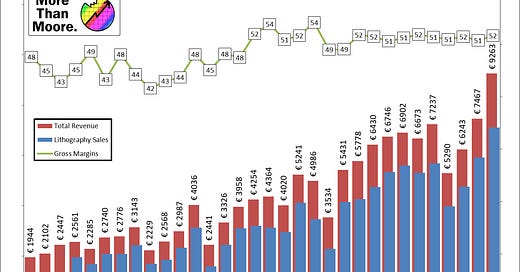Companies mentioned: ASML 0.00%↑
Kicking off the final leg of the 2024 earnings reports – Q4 and full-year results – it’s only fitting that it starts with ASML. The Netherlands-based equipment maker is responsible for the EUV (and other) lithography tools at the heart of today’s modern chips, and financially, are coupled very closely to their fab customers. The ki…




